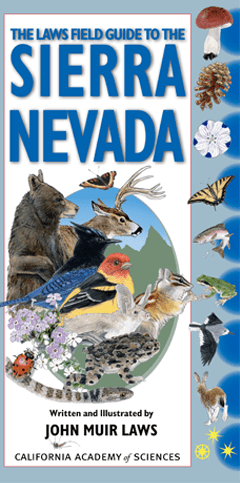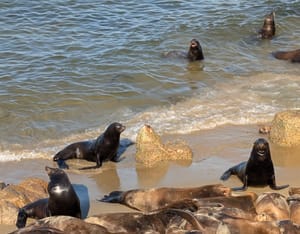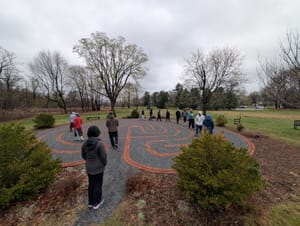One Saturday in July I went to B Street Books with the 11-year-old to hear the author John Muir Laws talk about his field guide to Sierra Nevada wildlife and his approach to keeping a nature journal.

Laws is a talented illustrator, a gifted naturalist, and an engaging speaker. His field guide is a lovely, accessible, and amazingly comprehensive resource. Unlike other field guides it’s organized by type of creature (insects, fish, birds, plants) and then subdivided by color, with handy color-coded tabs on the right side of each page to make things easy to find (look in this section for yellow flowers, this section for blue birds). I don’t know why more guides aren’t organized this way: It’s the quickest and simplest way for someone who knows next to nothing to find their way to the most relevant pages.
Laws spent six years’ worth of springs and summers in the Sierras, sketching and painting outdoors, and the intervening winters working in his home studio and doing research in museums and research libraries. He cross-checked all his sketches with top biologists and their graduate students, and then field-tested his field guide with inexperienced people (kids and adults) to iron out usability errors. The finished book contains over 3,000 watercolor paintings and is now regularly used by rangers working in the Sierras. Laws even showed a photo of the famous biologist E. O. Wilson with a copy of the Laws guide sticking out of his pocket.
For the second half of his talk, Laws discussed his approach to nature journaling and how to emulate it. In his view, it’s a way of stimulating your awareness of beauty and wonder — which also helps make the things that you see more memorable. The trick is that your brain gets acclimated to things that it thinks it already knows (oh, another California poppy, or even more impoverished: Oh, another orange flower) so it gets inured to the wonder-filled things happening around it all the time. Laws counters that with a three part approach designed to stimulate awareness, curiosity, and creativity. For each thing you record, note these three things:
Awareness: “I see…”: You notice something, draw a picture of it, make notes about it
Creativity: “It reminds me of…” (or more simply “IRMO”): You consciously seek out analogies to what you’ve seen and make notes about those
Curiosity: “I wonder…”: You ask questions or create hypotheses about what you’ve seen.
As an additional stimulus, Laws suggests making three kinds of notes on every page: drawings, words (descriptions), and numbers (measurements). That helps engage a wider range of your brain’s abilities and contributes to the awakening of awareness, creativity, and curiosity.
But what if you don’t feel comfortable sketching, or you’re just too embarrassed because you can’t draw? You can get past that, Laws says: Stick with it, and practice twice a week or so. Within a year your brain will feel more comfortable with the sketching process and you will start to get pleasurable squirts of dopamine when you do it, making it easier and more pleasurable for you to continue practicing.
I came away from his hourlong talk newly inspired to sketch and make notes about nature, not just up in the Sierras or wherever I happen to be vacationing, but also around the Bay Area and my own back yard.
I also came away with a copy of his field guide, and a set of five laminated, fold-out mini-guides to Bay Area wildlife that he also designed.
And, I leave you with a suggestion he made at the beginning of his talk: Support your local bookstore. By all means, use Amazon to browse, search, and read reviews for books. But once you find a book you want, instead of ordering it from Amazon, go down to your local bookstore and ask them to order the book for you. It’ll take longer, it’ll be slightly less convenient, it will probably cost a bit more — but you will gain immensely from supporting your local bookseller and getting to know them a bit. Anyway, it’s certain that Jeff Bezos doesn’t need any more money, but local bookstores do, and events like this one are a shining example of why we all benefit when they continue to exist and thrive.


